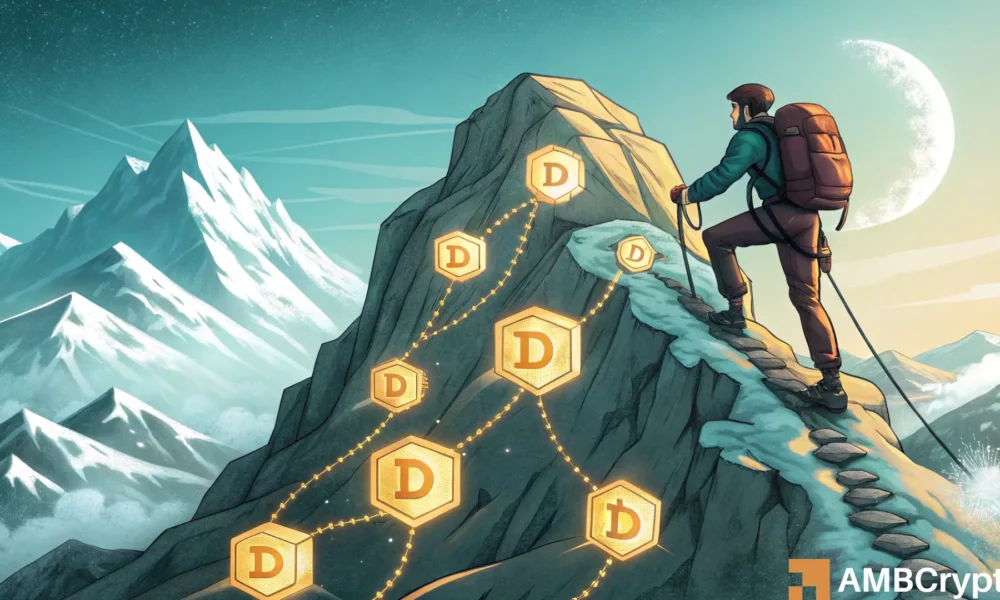- Dogecoin has struggled to embark on a bullish trend after November’s run
- Realized cap HODL waves showed some encouraging signs for buyers
Dogecoin [DOGE] gained by 18% in 36 hours to move from Monday’s lows at $0.3097 to $0.3653 on Wednesday. This move saw the memecoin retest the $0.36 resistance zone that has been a significant area of demand, then supply, since mid-November.
The drop in daily active addresses was a concern, but other metrics indicated some HODL behavior and accumulation. A rise in Open Interest and analysis of the DOGE/BTC pair showed that the $0.3 level could be a floor for Dogecoin in 2025. Are the buyers showing signs of intent to push towards the $0.7 highs and beyond?
Examining Dogecoin holders’ behavior
Santiment data showed the realized cap HODL waves across different timebound intervals. Realized cap is a concept that uses the value of each coin when it was last transacted to calculate its market cap. Usually, the current market price is multiplied by the circulating supply to get the market cap.
This difference in calculation gives a more accurate estimation of the value of a crypto asset and can be used to create various other metrics, such as MVRV.
The realized cap HODL waves in the chart below is a percentage value. The HODL waves are calculated as a percentage of the total realized cap for each time interval of holders. It can give a keener insight into market participants’ behavior.
Source: Santiment
The chart outlined the growth in realized cap from 7-days to 90-days. This pointed to a hike in trading or buying activity in this short to medium period. During the previous cycle top in April 2021, the 30-60 day realized cap HODL waves hit a value of almost 49% a month after DOGE’s all-time high.
At the time of writing, this HODL wave was at 27%. The 1-7 day HODL wave has been in a decline in recent weeks as well. Usually, in a strong run higher, this short-term holder cohort has a wildly higher realized cap percentage, reaching 52% around the previous cycle’s top.
Realistic or not, here’s DOGE’s market cap in BTC’s terms
Meanwhile, the 90-day to 365-day HODL waves have also fallen in percentage. This meant that longer-term holders were selling their tokens and realizing a profit. This could be a consequence of the shift in market sentiment over the past six weeks.
The reduced short-term HODL waves meant these holders were reluctant to sell and expected more gains. The uptick in the 7-90 day realized cap HODL waves was also encouraging.

